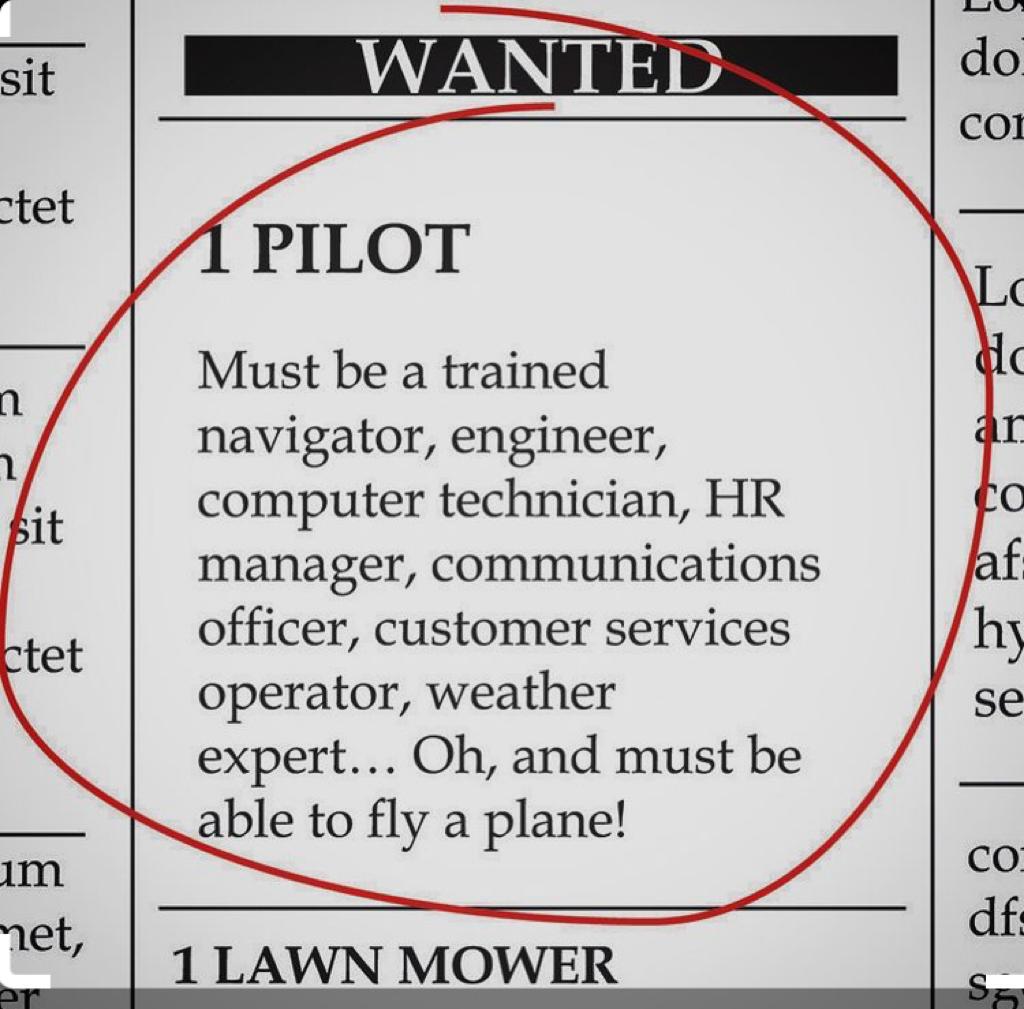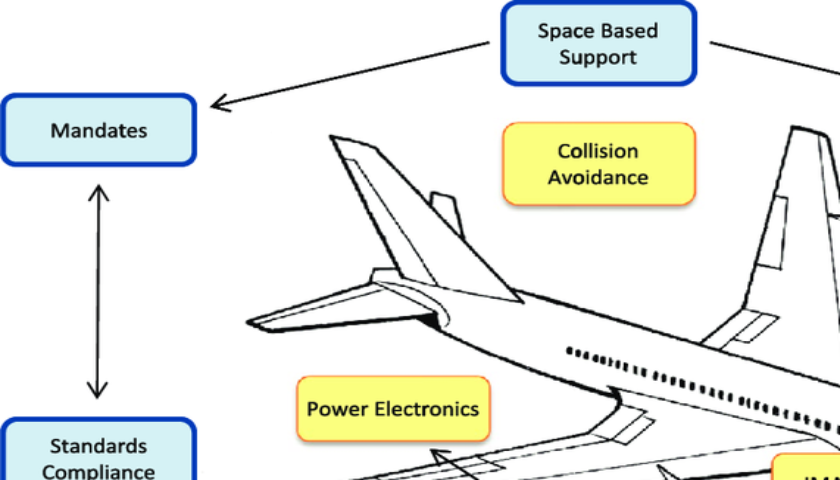For most people around the world, air travel these days is like taking a walk in the park. When people board the aircraft in today’s connected world, the mobile phones, the laptops and the stress of what is to follow at the end of the flight leaves little room for appreciating the beauty of flight itself as they are being transported over thousands of kilometres in a matter of hours. Ever since the Wright Brothers defied gravity in their ‘Wright Flyer’ at Kitty Hawk, advancements in aviation technology have made flying safer, smarter, routine and apparently easier for the pilots.
“Oh, these modern machines fly on autopilots the pilots are just a backup!”
An often-heard phrase that resonates a common perception that airline pilots have it easy these days. Yes, modern aeroplanes are highly automated and that does reduce pilot workload manifold but the responsibility of hundreds of lives in their aircraft leaves little room for relaxation. Even when the pilots are doing nothing, a lot is happening in their minds. Advancements in technology have eased the workload of the crew no doubt, but they have also expanded the flight envelop exponentially. A few decades ago, what could be considered as dangerous to fly weather is now good enough to fly, visibility as low as 75m (practically less than a football field length) is considered adequate to land a big jet at 250-280 Kmph. There is no margin for error as precious lives are at stake.
Here’s a small sneak a peak into the pilot’s world; the little room on the other side of the cockpit door!
Its 1 AM in the morning, the alarm rings loudly… and you reluctantly leave your bed to catch the 4 AM flight to your destination, it suddenly does not sound a good idea. You curse yourself for not choosing a comfortable 8 AM flight. At almost the same time, the alarm rings for the captain as well and he too drags his feet out of the bed, fighting the deep slumber and the overwhelming desire to tuck into the sheets again. For all the crew, the day starts at least 3 hours before the flight.
Due to the frequently changing flying patterns, the crew have to constantly struggle against their biological clock; the meal times and sleep patterns have to be constantly adjusted to the flying schedule. Often the family lifestyle too has to be readjusted according to the pilots’ routine. Today, the crew have somehow managed to sleep for at least 6 hours; the minimum required to work at high levels of alertness especially for flights at such unearthly hours. The period between 2 AM to 6 AM is considered as the ‘Window of Circadian Low (WOCL)’, a period in which people are usually in the deepest of sleep and if awake, it’s the period of low attentivity. A dangerous environment that requires mental and physical training to operate in a highly stressful environment. The monsoon is in full swing and thunder clouds all around the airfield are daring us to fly. It’s their domain and we are the infiltrators! In the world of aviation today, weather and fatigue perhaps present the biggest challenges to the pilots. At 4 am in the morning, the threats seem to have converged. It will be a test of skill and training.
As the passengers are boarding, the pilots are busy as bees in their hive. Pre-flight system checks, finalizing the fuel requirement based on passenger/cargo load, weather etc, preparing the navigation computer and briefing to get both pilots on the same page is happening in almost a clockwork-like fashion. The passenger load indicates that there are three babies in arms, seven children, five wheelchair-bound senior citizens and an expecting mother on board. The captain’s mind drifts to the weather. Need to avoid dark clouds and turbulence, keep the descent rate slow or the babies and children could have a tough time with ear pains. Slowly the rain is picking up and there is a hint of lighting. The excitement is just building up.
The cargo is getting loaded, aircraft is being refuelled, the passengers are boarding, the engineers, commercial and security staff are all buzzing in and out of the cockpit to complete their tasks. In all this chaos, with one eye on the clock, the captain is monitoring all the activities and also the ATC (Air Traffic Control) frequency. The radio crackles, giving some valuable information about the developing scenario. The weather is deteriorating and there is congestion building up at the take-off point. There could be delays expected for takeoff. Is the fuel adequate or some more is required? Additional fuel means increased operating costs but when it comes to passenger safety, there is no compromise.
The captain is taking mental notes, his mind busy orientating with the contingencies that could test the pilots’ skills and competence. No matter how advanced the technology on board and no matter much experience, training and competence the crew have, any lapses could lead to a catastrophic situation. You have to get it right every time…… every time!
The cabin crew are also busy with their part. Like the laborious and meticulous ants, they gently nudge the passengers to take seats quickly, assist the senior citizens, the expecting mother and the mothers with babies in arms. Politely but firmly they keep progressing with their tasks. The Senior Cabin Crew (SCC) is monitoring all passengers. If the contingency arises, evacuating the passengers will be a challenge and those who will need additional care and assistance are being marked. Behind those pretty young faces, there are professional minds at work!
Its three minutes to go to for pushback from the stand, all passengers are on board and the aircraft is ready to depart. The cabin crew announces for all ground staff to deplane and the captain signals to close and arm all doors. The flight is ready for departure. The engineering staff pushback the aircraft on time; the pilots start the engines and commence taxing the aircraft to the takeoff point. Approaching the runway, the traffic and weather picture starts to become clearer and mentally the pilots start building the big picture. There are turbulent clouds in the departure path, there could be some wind shear (extreme turbulence due rapidly changing wind patterns) and the aeroplane will need to deviate from the designated departure path for safety. There are threats all around and the pilots are constantly updating their strategy to mitigate them. After six departures and two arrivals, finally its time for takeoff. “Cabin Crew be seated for takeoff”, the copilot announces as the captain enters the runway for takeoff. One final assessment of the situation and the pilots decide to continue for takeoff.
Just after takeoff, the aeroplane starts to shake a little, it’s the turbulence caused by thunder clouds around. The weather radar indicates that a right deviation is required and the copilot promptly takes clearance from the ATC. Due to bad weather, many aircraft are asking for deviation and the radio is jammed with transmissions from pilots. The crew are monitoring the radio like a hawk, any ATC instructions cannot be missed. Mistakes could be dangerous. The captain is making constant changes to speed, direction and altitude to steer clear of the weather and the copilot efficiently complements the captain, seeking timely ATC clearances while managing his routine tasks. The workload is high and both pilots are working in harmony to fly the plane safely. Their jugalbandi is a product of some very professional training imparted by the company trainers.
Deftly steering through the dangerous thunder clouds, the pilots progress the flight and climb to the designated cruise level of Flight Level 350( 35000 feet). The weather radar, the radio transmissions of other aircraft are all being constantly monitored. Forewarned is forearmed! Passing 10000 feet, as a matter of procedure, the captain assesses the conditions and decides to keep the seat belt sign on a little longer, it’s not safe yet for the passengers to leave their seats. Passing 20000 feet, the environment is much better and the autopilot that was constantly being given inputs by the captain can now be allowed to take greater control. The seatbelts ‘ON’ sign can be switched off and the passengers can sit back and relax. The cabin crew can commence their service.
By the time the aeroplane reaches its cruise level of FL350, for the pilots, it’s been 45 minutes of exhaustive cockpit work with peak levels of concentration. Time to sip on a well-deserved coffee now. Soon it will be time for descent and a similar sequence of events will be replayed during descent and landing. Time to speak to the passengers.
“Good Morning, Ladies and Gentlemen, this is your captain speaking!”
Thanks, Anurag for sharing your experience and thoughts. I hope readers enjoyed this article as much as we enjoyed bringing it! If you want to share your knowledge about aviation and flying, you are most welcome to do so on my blog.
Gp Capt Anurag Sharma, VSM, (Retd) was commissioned into the fighter stream of the Indian Air Force on 18 Dec 1993. During almost 24 years of service, he has flown a variety of fighter and trainer aircraft with Su-30 MKI and Jaguars being his primary aircraft. He has more than 4400 of military flying to his credit. Alumni of NDA, he is a Cat A QFI, an Air Force Examiner on Jaguar and Su-30, commanded a Su-30 MKI Sqn, and was also the Chief Operations Officer of a Su-30 base. He also holds an MSc ( Def Studies) degree from DSSC and an M Phil in Defence strategy from the School of Advanced Air and Space Studies ( SAASS), USAF. Presently he is employed with an Airline as an A-320 Captain.
Happy Landing.
Related post: My First Flight as a Trainee Pilot . Click here to read.
Related post: . My First Air Travel Experience. Click here to read.
Related post: . Flight Instructors. Click to read.



